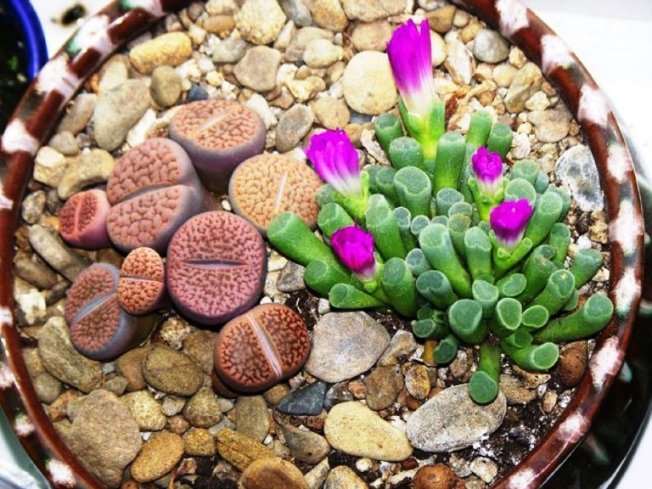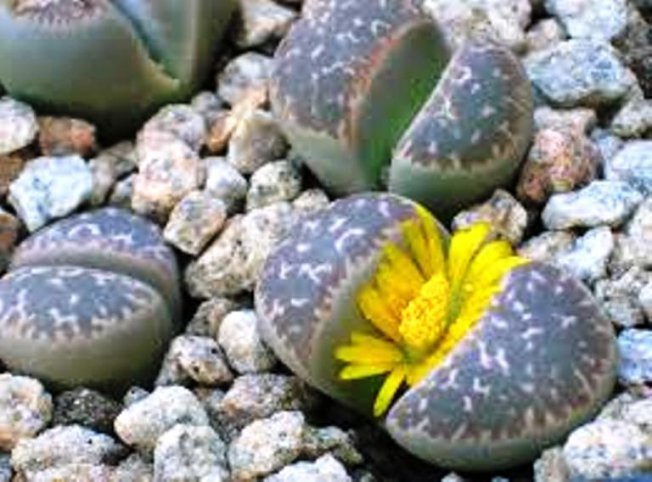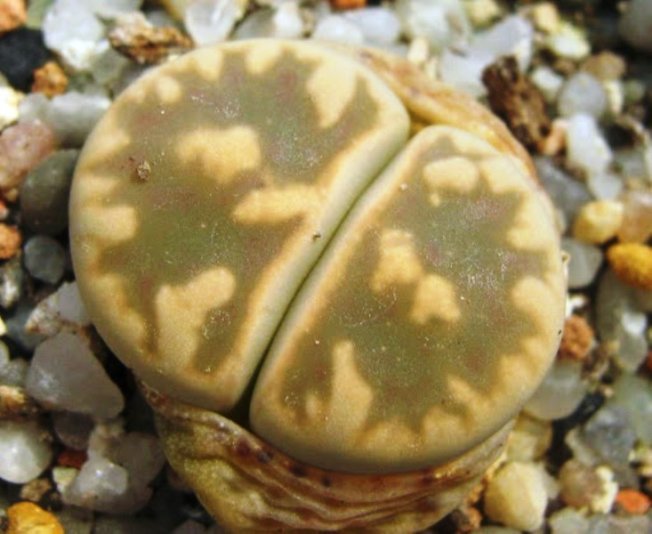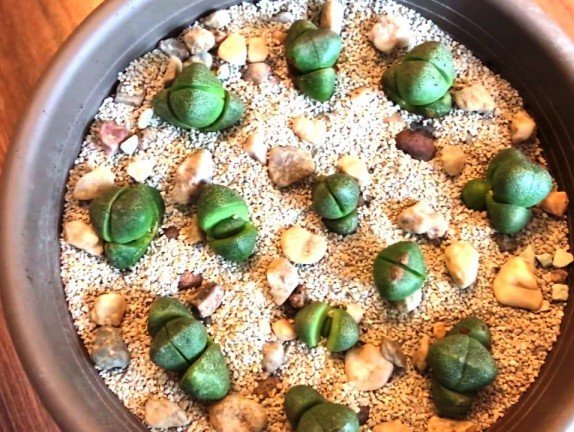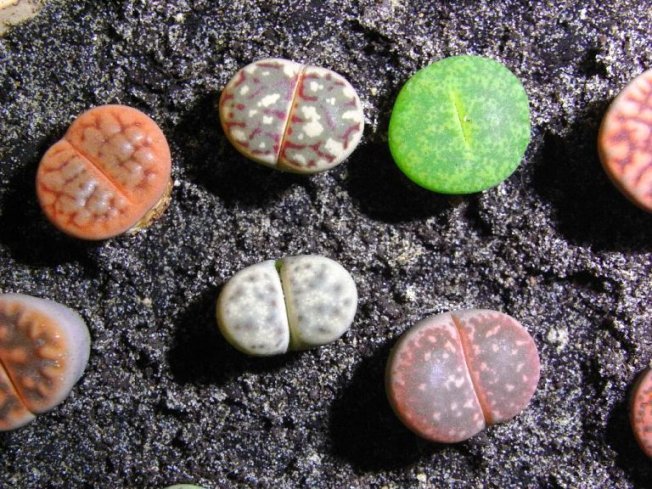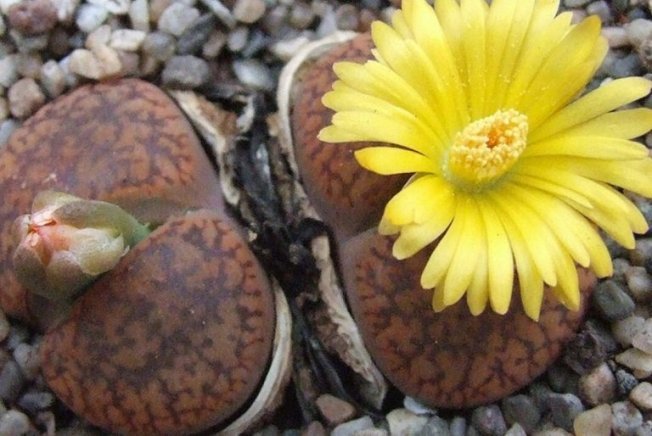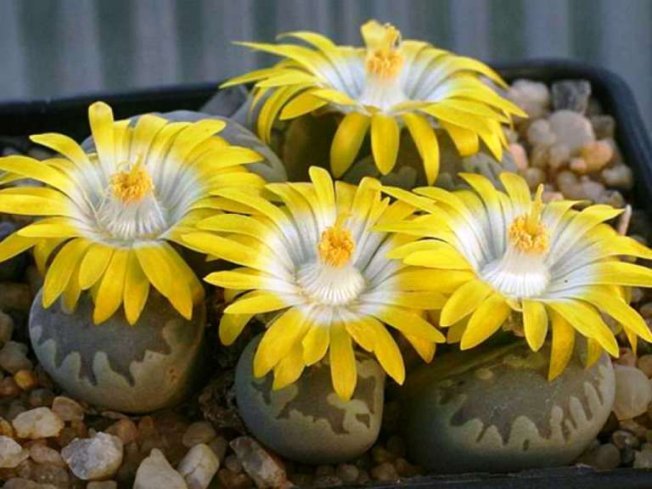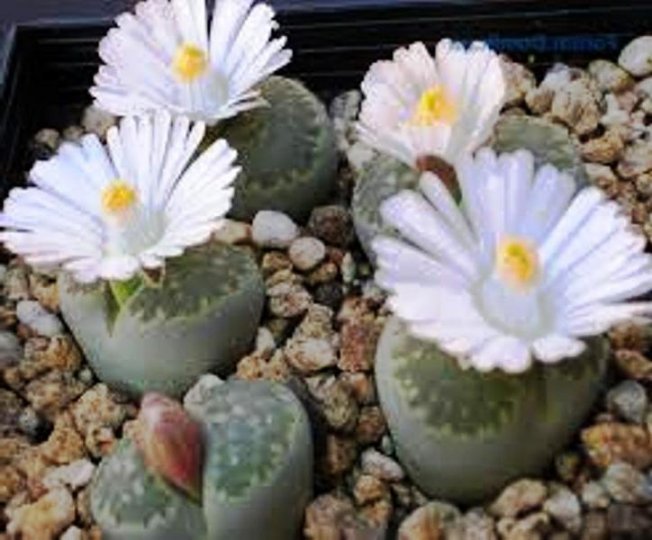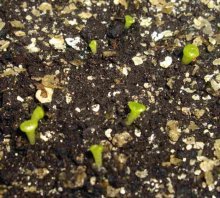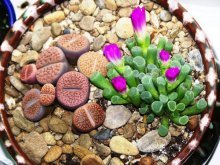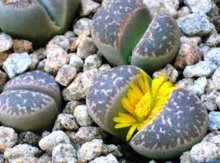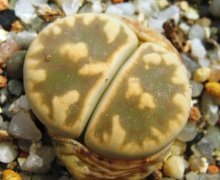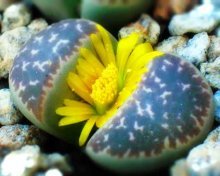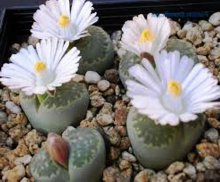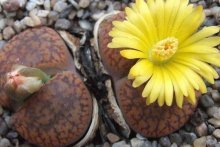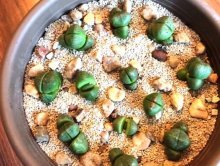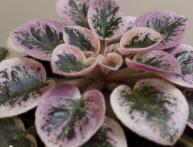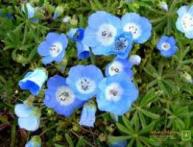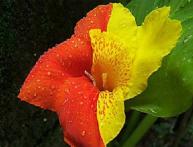How to grow lithops from seeds, how to care for seedlings and adult plants
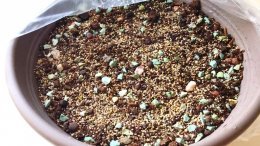
Is it possible to grow lithops from seeds, and how to properly plant such an unusual plant? Such questions often arise among lovers of indoor floriculture.
Therefore, we invite you to learn more about the amazing living stone and the basic rules for growing it.
Content:
- Living stones, description and photo of the plant
- Common varieties
- Reproduction options, is it possible to grow lithops from seeds
- What do the seeds look like?
- What soil is suitable for growing succulents?
- How to sow correctly
- Care rules: lighting, watering, fertilizing
- Do small plants need to be replanted?
- Pest and disease control
- How long does Lithops grow?
- Lithops in the garden
Living stones, description and photo of the plant
Living stones, or lithops, are very unusual plants. In appearance they are not much different from pebbles. They belong to succulents, but calling them cacti can be a stretch; they do not have needles on their surface, and their shape is quite original.
Lithops are representatives of the Aizaceae family, their homeland is the desert regions of South Africa. The habitat of stone flowers is sandy soils and quartz outcrops; it can be difficult to distinguish plants among fragments of stones and pellets. Lithops can be found in rock crevices at an altitude of up to one and a half kilometers.
The name of the plant itself means “stone”.In the wild, scientists identify about 70 species of this genus. Mature plants usually grow in groups of 10-20 individual plants.
The colors of lithops are quite varied, from gray to dark ruby; there may be patterns and inclusions. Natural camouflage as natural stones helps plants escape from herbivores.
The plant itself consists of two fused thick leaves, separated by a cleft, which may have different shapes, may be an insignificant mark, or perhaps a cut extending to the ground level. The leaves are a kind of reservoir for the plant to accumulate moisture.
To provide the plant with light, there are windows on the top of the leaves, through which lithops covered with sand receive sunlight.
But with the onset of the rainy season, lithops are transformed - they are covered with flowers similar to daisies, buds appear from the crevice between the leaves.
The lifespan of each flower is 10-12 days; starting from the 5th day of flowering, the petals begin to change color: white - to pink, yellow - to brick. The petals open in the afternoon and close with the onset of night.
Flowers of many species have a strong sweetish aroma.
After flowering, the plants turn into “stones” again, they have to survive with virtually no moisture, only fogs and cool nights save them.
During prolonged droughts, the leaves may lose shape and dry out, but when liquid is supplied, the plants grow in the above-ground part. Such a revival is possible due to the fact that the growth point is located deep, near the roots, and the organic matter of the mother plant serves as a source of nutrition for the sprout.
Subject to the receipt of moisture, the plant resumes its previous dimensions: 2-3 cm in height, approximately the same in diameter. This cycle can be repeated an infinite number of times, so in nature you can find lithops that are up to hundreds of years old.
Let's watch a useful video about lithops:
Common varieties
The varieties of living stones listed in the table are most often grown indoors.
| Variety | Description and features |
| Lithops bella, i.e. Beautiful | It is distinguished by beautiful brownish leaves and has several pairs of leaves. Diameter about 2 cm, height - up to 3 cm. The flowers exude a very delicate aroma. Flowers are white. |
| Lithops divergens, or Divided | It has green leaves with gray spots. The size of a pair of leaves can range from 1 to 3 cm, with a beveled surface. Flowers are yellow. |
| Lithops salicola, or Soleros | The leaves are gray, height from 2 to 2.5 cm. The diameter of the plant is also about 2.5 cm. Dark spots stand out brightly on the olive-colored surface. Flowers are white. |
Reproduction: is it possible to grow lithops from seeds
Lithops can be grown from seeds. They can be purchased at gardening stores, or you can collect them yourself; you can ask for seeds from those who are already growing these amazing stones.
An important point: to obtain seeds, it is necessary that there are at least two plants of the same species nearby on the windowsill.
The positive thing is that the seeds of the plant can be stored for a long time, even decades, so you don’t have to worry that they will be stale.
Seeds stored for a long time may lose their germination percentage. The ideal option is to sow seeds that are 3 years old.
Let's watch a video on how to grow lithops from seeds:
What do the seeds look like?
You can see what lithops seeds look like in the photo. They are small in size, colored brown, and are located in the middle of the fruit, which is a capsule.
It is better to store seeds in the middle of the fruit; they are removed immediately before planting by breaking the capsule, or by soaking it in water, then the seeds themselves will separate from it and settle to the bottom. All that remains is to dry them.
What soil is suitable for growing succulents?
Plants that can survive in desert conditions can, of course, grow in soil of any composition. However, there are quite serious requirements for its quality: it must pass water well.
The correct selection of soil mixture will simplify watering; in addition, special attention to each individual plant will be very useful.
Most often they resort to the use of the following compositions:
- to one part of purchased soil add one part of pumice or perlite and a little sand;
- to one part of purchased peat soil add 2 parts of a mixture of perlite and sand;
- the same amount of perlite is added to one part of koksovit.
Despite the fact that, under natural conditions, living stones grow in soils with quite different compositions, but with quality care they can safely exist in the same composition, but adapted for growing succulents.
The composition should not be allowed to contain too many nutrients; the plants may acquire too large and rounded shapes, such a plant may simply burst like a balloon. To avoid this situation, watering should be optimized.
Fertilizing will be required only if mixtures that are too poor in organic components are used.
How to sow correctly and when, in what pots
The best time for sowing lithops is spring-summer; however, experienced gardeners often claim that they were able to obtain high-quality seedlings even when sowing lithops in winter.
The advantages of autumn-winter sowing are obvious, because at this time, unlike in summer, you do not go on vacation, or to the country, i.e. You can give maximum attention to small plants. After all, until the small, weak shoots get stronger, there is a real threat of their death.
Plants require especially careful care during the first months of life.
As for the pots for sowing, you should not take too large; a depth of 10 cm will be sufficient; you can use those in which you usually grow seedlings. The bottom should be lined with a layer of drainage, then covered with sand and topped with soil.
The seeds are placed at a distance of a couple of centimeters from each other. There is no need to sprinkle them with soil. With proper care, the first shoots can appear in just a week and a half.
Care rules: lighting, watering, fertilizing
The first thing to note is the love of lithops for light; the optimal option would be to organize illumination for seedlings if sowing is done in the autumn-winter period.
Another feature is that significant temperature fluctuations throughout the day accelerate the process of seed germination and growth, and small plants grow stronger faster.
Since it is problematic to ensure such differences at the height of summer, it is still better to sow seeds of live stones in the off-season.
The emerging shoots are kept in a greenhouse, but the film will need to be removed periodically - the plants need ventilation.
They also need to be accustomed to life in the open air; in addition, ventilation will prevent the appearance of mold.
The film is removed at least three times a day, for about 20-25 minutes. You should not leave the greenhouse open for a long time; too dry air in the apartment can also harm the seedlings.
Small plants do not water, it is recommended to spray the soil a small amount of warm water. The optimal temperature is + 20 C, or higher.
Leaves should not be exposed to direct sunlight.
This care will be required for approximately two weeks. Then you can cover the greenhouse only at night.
Lithops are very sensitive to light; you can learn about its lack as the plants stretch upward - this means the lighting is weak. With too much light, the color of the leaves may change to red, and growth may also slow down.
Although lithops are not very capricious, it should be remembered that they react very poorly to constant changes in dislocation. Those. It is not recommended to move the pot from place to place and rotate it around its axis. Therefore, you should determine in advance the place where you can place pots with live stones.
Soft water should be used to water plants. An excellent option would be melt water or melted snow.
Adult plants require more active watering during the period of bud growth and flowering, as well as on hot summer days. In winter, watering is kept to a minimum.
Growing lithops do not need fertilizers, and it is also not recommended to treat the plants themselves and the soil with chemicals.
Adult plants are fed exclusively with fertilizers for cacti.
As they grow, the seedlings are covered with stones, they:
- will support plants in an upright position;
- prevent weed germination;
- will give the pots a decorative look.
Do small plants need to be replanted? Do they need replanting?
Small lithops do not need replanting. But picking may be required if the crops have been thickened. Only such a situation can serve as a reason for a transplant.
To avoid such a tedious procedure, it is better to sow seeds less frequently.
Transplanting lithops and caring for them as adult plants is possible only after two years of age. In this case, you should use deep pots; the composition of the soil can be the same as that used for small plants, with the obligatory addition of sand.
Pest and disease control
Aphids and scale insects can harm lithops. Pests are controlled with systemic insecticides.
Plants can suffer from the development of fungal diseases and putrefactive processes, the cause in most cases is excessive soil moisture, leading to stagnation of moisture and rotting of the roots. This is extremely dangerous and the plants may die.
The owners themselves cause the greatest harm to lithops when they neglect the rules of watering. Due to excess and stagnation of moisture in the soil, the root system rots and the plant may die.
How long does Lithops grow?
The lifespan of lithops is considerable; even hundred-year-old specimens are found in the wild.
In botanical gardens there are plants that are 25-40 years old.
Owners of private collections are happy to report on forums about their 10, 15, or even 20-year-old pets.
The first flowering of lithops can occur no less than three years after planting.
Lithops in the garden
Considering that in nature lithops grow in the desert, summer temperatures of about + 20-25 C are quite acceptable for taking pots with plants to an open veranda, balcony or garden.
Plants can withstand heat and + 40 C, but provided that they are shaded, i.e. They will not be exposed to direct sunlight.
At very high temperatures, plants go into a state of hibernation; revival and restoration of life processes occurs only at night, when the heat subsides.
Shade of 20-30% during the daytime is recommended.
In winter, during hibernation, the plant must be kept at a temperature within + 10 +12 C. At a temperature of - 8 C, the liquid contained in the leaves freezes, destroying the plant cells.
Living stones are unusual flowers, quite original. Watching their development is extremely interesting even for experienced gardeners. Any lover of exotic plants can grow lithops from seeds, provided, of course, that the plants are properly cared for.

